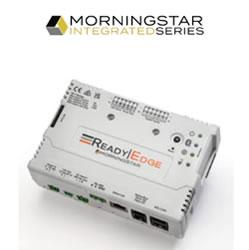SOLAR 2013 to Focus on German Policy Innovations Responsible for World Leadership in Solar
What can the US learn from Germany? Two veterans of the German renewable energy industry will be answer that question at the American Solar Energy Society (ASES) National Solar Conference in Baltimore, MD, April 16-20. Germany is moving rapidly towards a renewable energy economy and for years has been the world's top installer of photovoltaic systems.
Boulder, CO, March 14, 2013 -- The American Solar Energy Society (ASES) welcomes Jochen Flasbarth, President, German Federal Environment Agency, and David Wedepohl, Markets & Communications Director of German Solar Industry Association at its annual National Solar Conference, SOLAR 2013, in Baltimore, April 16-20. ASES will explore the German policies and financial incentives that have led to rapid growth in the country's renewable energy installations, exceeding the expectations of policy analysts and investors around the world.
On Thursday, April 18, Jochen Flasbarth will join Bill McKibben, founder of 350.org, in a plenary session on Climate & Resiliency. Other speakers include Alice LeBlanc, former head of the Office of Environment and Climate Change at American International Group (AIG) and Patricia Hoffman of the Department of Energy, Office of Electricity Delivery and Energy Reliability. Behind Germany's rapid development of renewable energy is a goal to cut greenhouse gas emissions 40% by 2020. That goal is linked to producing 35% of electricity from renewable sources by 2020 and 80% by 2050. German goals also include reduction in fossil fuel imports and sustainable economic growth.
David Wedepohl will speak on "Building the Solar Industry" on Friday, April 19, along with Rhone Resch, head of the Solar Energy Industries Association; Tony Clifford, CEO of Standard Solar; and Laura Jones, a partner at Hunton & Williams and an expert on tax incentives for renewable 

energy. Wedepohl will also participate in a panel session that explores which German policies might be appropriate in the United States.
The key driver behind the rapid expansion of renewable energy in Germany has been the Feed-In-Tariff (FIT), a long-term contract guaranteeing revenue for solar producers over a twenty-year time-period. The FIT, which pays more than the retail cost of electricity, has encouraged hundreds of thousands of German farmers and homeowners to earn income by owning grid-tied solar. Because the country has focused on eliminating red tape and cumbersome permitting requirements, the cost of a PV system in Germany is half what it is in the United States. Germany's solar industry now employs upwards of 300,000 people, more than its auto industry.
About the American Solar Energy Society
Established in 1954, the nonprofit American Solar Energy Society (ASES) is the nation's leading association of solar professionals and advocates. Our mission is to inspire an era of energy innovation and speed the transition to a sustainable energy economy. ASES leads national efforts to increase the use of solar energy and other sustainable technologies through the publication of the award-winning SOLAR TODAY magazine, the ASES National Solar Tour - the largest grassroots solar event in the world, and the the ASES National Solar Conference. For more information about ASES and the SOLAR 2013 conference please visit http://www.ases.org/solar2013.
Featured Product

